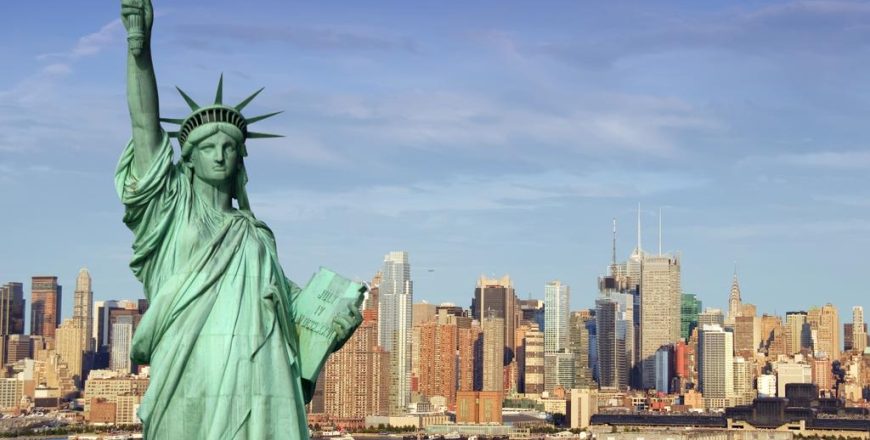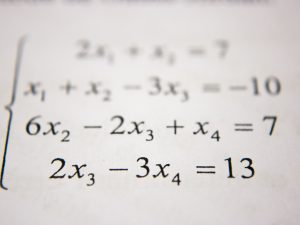
- Description
- Curriculum
- FAQ
- Reviews
In AP U.S. History, students investigate the development of American economics, politics, and culture through historical analysis grounded in primary sources, research, and writing. The equivalent of an introductory college-level course, AP U.S. History prepares students for the AP exam and for further study in history, political science, economics, sociology, and law.
Through the examination of historical themes and the application of historical thinking skills, students learn to connect specific people, places, events, and ideas to the larger trends of U.S. history. Critical-reading activities, feedback-rich instruction, and application-oriented assignments hone students’ ability to reason chronologically, to interpret historical sources, and to construct well-supported historical arguments. Students write throughout the course, responding to primary and secondary sources through journal entries, essays, and visual presentations of historical content. In discussion activities, students respond to the positions of others while staking and defending claims of their own. Robust scaffolding, rigorous instruction, relevant material, and regular opportunities for active learning ensure that students can achieve mastery of the skills necessary to excel on the AP exam.
This course has been authorized by the College Board® to use the AP designation.
*Advanced Placement® and AP® are registered trademarks and/or owned by the College Board, which was not involved in the production of, and does not endorse this product.
Length: Two semesters
-
1Lesson 1: Conquering a Continent
- Read - Conquering a Continent: Summarize the building of the transcontinental railroad and describe how it affected migration, regional growth, ethnic identities, the economy, the environment, and American Indians.
- Quiz - Conquering a Continent: Take a quiz to assess your understanding of the material.
- Journal - Life on the Plains: Read a narrative on life of a settler on the plains, and write a brief journal entry on how it would be for you to adapt to this way of life.
- Study - Frontiers and Development in the New West: Explore how westward migration shifted American identity, changed the American economy, and altered the very environment of North America.
- Quiz - Frontiers and Development in the New West: Take a quiz to assess your understanding of the material.
- Study - Impact of Migration and Expansion: Analyze and evaluate the effectiveness of strategies developed by the government, reformers, and American Indians themselves in shaping the role of American Indians in American society.
- Quiz - Impact of Migration and Expansion: Take a quiz to assess your understanding of the material.
- Discuss - Expansion versus Preservation: Discuss why policies concerning the use of natural resources and the environment have changed since the late 19th century.
-
2Lesson 2: Industrial America
- Read - Industrial America: Describe what led to industrial growth after the Civil War, explaining how changes in transportation and technology, the integration of the U.S. economy into the global economy influenced U.S. society.
- Quiz - Industrial America: Take a quiz to assess your understanding of the material.
- Journal - Captains of Industry or Robber Barons? Research a major industrialist of the Gilded Age and evaluate them as a captain of industry or a robber baron.
- Study - Industrialization, Unions, and Consumer Culture: Explain how changes in transportation and technology, the integration of the U.S. economy into the world economy, labor, and migration systems, influenced U.S. society.
- Quiz - Industrialization, Unions, and Consumer Culture: Take a quiz to assess your understanding of the material.
- Study - Analyzing Immigration Demographics: Analyze primary source documents, historical chronology, images, charts, and statistics, to explain urban immigration patterns in the 19th century.
- Quiz - Analyzing Immigration Demographics: Take a quiz to assess your understanding of the material.
- Practice - An Industrial Worker's Story: Write a historical fiction account of an immigrant's experience coming to a major industrial city in the Gilded Age.
-
3Lesson 3: American Culture in the Gilded Age
- Read - American Culture in the Gilded Age: Read how cultural values and artistic expression changed in the United States in response to the Civil War and postwar industrialization.
- Quiz - American Culture in the Gilded Age: Take a quiz to assess your understanding of the material.
- Explore - Creative Expression in the Gilded Age: Compare how cultural values and artistic expression changed in the U.S. in response to the Civil War and postwar industrialization.
- Study - Changing Culture in the Gilded Age: Summarize how cultural values and artistic expression changed in the U.S. and how culture and the arts influenced movements for social and political change.
- Quiz - Changing Culture in the Gilded Age: Take a quiz to assess your understanding of the material.
- Study - Interpreting the Impacts of Industrialization: Analyze diverse historical interpretations to determine the impact of industrialization on popular beliefs about progress and the national destiny of the U.S. in the 19th century.
- Quiz - Interpreting the Impacts of Industrialization: Take a quiz to assess your understanding of the material.
- Practice - Artists of the Gilded Age: Research and write a report on an artist from the Gilded Age, explaining influences and impact on the era.
-
4Lesson 4: Urbanization
- Read - Urbanization: Describe the causes and effects of urbanization in the 19th century and how migration lead to conflicts between different racial and ethnic groups.
- Quiz - Urbanization: Take a quiz to assess your understanding of the material.
- Journal - America's Industrial Cities: Explain some of the causes and effects of major internal migration patterns in the rise of industrial cities post 1865.
- Study - The Rise of Cities: Analyze how urban machines and growing corporate power influence and reflect the changing structure of large cities, and how urban social, economic and political issues arose during this period.
- Quiz - The Rise of Cities: Take a quiz to assess your understanding of the material.
- Study - Urban Reform in Historical Context: Explain reform efforts to solve the social and economic challenges of large cities and the political machines of the late 19th century.
- Quiz - Urban Reform in Historical Context: Take a quiz to assess your understanding of the material.
- Practice - Thomas Nast versus Tammany Hall: Analyze Thomas Nast's political cartoons in relation to Tammany Hall.
-
5Lesson 5: Politics of the Gilded Age
- Read - Politics of the Gilded Age: Summarize party platforms and changing government structures and policies regarding market economy, natural resources, corporate power for 1880-1910.
- Quiz - Politics of the Gilded Age: Take a quiz to assess your understanding of the material.
- Discuss - Democrat, Populist, or Republican? Discuss and contrast opposing political group's platforms for addressing the problems of the Gilded Age.
- Study - Reform Visions: 1880 – 1896: Examine the strategies that different political and reform groups developed to address the problems of the Gilded Age.
- Quiz - Reform Visions: 1880 – 1896: Take a quiz to assess your understanding of the material.
- Study - Evaluating Reform in the New South: Evaluate diverse late 19th-century ideas for reforming the nation, particularly the South.
- Quiz - Evaluating Reform in the New South: Take a quiz to assess your understanding of the material.
- Practice: The Imperial Presidency: Analyze sources documenting the rise of an imperial presidency between 1880 and 1917.
-
6Lesson 6: Wrap-Up: Industrialization and Culture Change: 1865 – 1900
- Review - Industrialization and Culture Change: 1865 – 1900: Prepare for the unit test by reviewing key concepts and skills.
- Test (CS) - Industrialization and Culture Change: 1865 – 1900: Take a computer-scored test to assess what you have learned in this unit.
- Test (TS) - Industrialization and Culture Change: 1865 – 1900: Take a teacher-scored test to assess what you have learned in this unit.
-
7Lesson 1: Progressivism
- Read - Progressivism: Describe how Progressives argued for and promoted federal laws to regulate the economy, to make social reforms and to protect the environment during this era. Summarize the economic, social, and cultural transformations of the Progressive era. Identify the ways that Progressives changed the role of government in the nation's political, social, economic, and environmental affairs.
- Quiz - Progressivism: Take a quiz to assess your understanding of the material.
- Journal - Roosevelt's Progressive Vision for America: Discuss the idea of history as biography in response to a brief biography of Teddy Roosevelt.
- Study - American Progressivism: Explain the origins of Progressivism and how the movement tried to change the U.S. economic system. Describe how Progressives argued for and promoted federal laws to regulate the economy, to make social reforms and to protect the environment during this era.
- Quiz - American Progressivism: Take a quiz to assess your understanding of the material.
- Study - Causes and Effects of Progressive Reform: Analyze how changes in class identity and gender roles have related to economic, social, and cultural transformations of the Progressive era. Explain the causes, inspirations and strategies that lead Progressives to change the role of government in the nation's political, social, economic, and environmental affairs. Evaluate the impact of Progressivism on U.S. society, and compare and contrast the success of Progressives to that of the Populists.
- Quiz - Causes and Effects of Progressive Reform: Take a quiz to assess your understanding of the material.
- Practice - Women's Rights Movements: Keys to Success: Evaluate documents to determine what factors lead to the success of the women's suffrage movement. Write an essay analyzing the causes for success in the women's suffrage movement.
-
8Lesson 2: The United States Becomes a World Power
- Read - The United States Becomes a World Power: 1) Describe the changes in U.S. foreign policy, from expansionism to isolationism, over a 20 year period. 2) Summarize debates on American democratic ideals and the causes and effects of U.S. involvement in the War of 1898 during this period. 3) Identify and describe public debates and the causes and outcomes of conflict in the Philippines and elsewhere, and explain how these events affected the U.S.'s perceived role in the world.
- Quiz - The United States Becomes a World Power: Take a quiz to assess your understanding of the material.
- Journal - How Did Americans Justify Imperialism? Analyze how debates over political values and the extension of American ideals abroad contributed to ideological clashes during the early 20th century.
- Study - Emerging American Imperialism: Explain to what degree imperialism was a conflict over limited resources. Identify both sides of the debate on whether American interventionism upheld or was in conflict with its democratic ideals. Describe the factors that account for the shift from expansionism to isolationism over a 20 year period.
- Quiz - Emerging American Imperialism: Take a quiz to assess your understanding of the material.
- Study - Evaluating Evidence, Comparing Causes: Evaluate the policy goals of U.S. involvement in the War of 1898. Analyze the factors that led to the U.S entering the War of 1898. Examine how U.S. involvement in the Philippines and elsewhere affected the U.S.'s perceived role in the world.
- Quiz - Evaluating Evidence, Comparing Causes: Take a quiz to assess your understanding of the material.
- Practice - Debating the Global Role of the United States: Analyze the evolving nature of domestic debates over U.S. Involvement for international conflicts during this period.
-
9Lesson 3: World War I
- Read - World War I: Describe the events, debates and decisions that led to the shift in American foreign policy from Imperialism to Isolationism between 1898 and 1919. Summarize the ways in which the U.S. did or did not live up to its democratic ideals during this era. Identify and describe World War I peace negotiations, including Wilson's 14 Points, the League of Nations, and the Treaty Versailles. Identify how the war affected U.S. society, describing the ways that World War I had changed the American home front.
- Quiz - World War I: Take a quiz to assess your understanding of the material.
- Explore - Periodization: 1917 – 1920: Compare multiple events that occurred during the year 1917, explaining why it should be considered a turning point in U.S. History.
- Study - World War I: From Imperialism to Isolationism: Describe the course of events and the debates and decisions which followed, to explain the shift in American foreign policy from Imperialism to Isolationism between 1898 and 1919. Analyze events before, during and after World War I to determine the extent to which the U.S. lived up to its democratic ideals during this era.
- Quiz - World War I: From Imperialism to Isolationism: Take a quiz to assess your understanding of the material.
- Study - Using Evidence: Negotiating Peace: Analyze the peace negotiations at the conclusion of World War I, including Woodrow Wilson's Fourteen Points, the League of Nations and the Treaty of Versailles, to explain the shift in American foreign policy and to account for how the war had changed the American home front.
- Quiz - Using Evidence: Negotiating Peace: Take a quiz to assess your understanding of the material.
- Practice - World War I and Civil Liberties: Write a brief essay comparing historical documents and other evidence to explain the reasons that American foreign policy shifted between 1898 and 1919.
-
10Lesson 4: The 1920s
- Read - The 1920s: Describe the themes and transformations of U.S. society in the 1920s. Identify the major economic, cultural and demographic changes that swept through the U.S. during this period. Summarize the cultural values of the 1920s.
- Quiz - The 1920s: Take a quiz to assess your understanding of the material.
- Explore - The "Roaring '20s": Discuss how the dual forces of modernity and normalcy caused social and cultural change during the 1920s. Write a brief analysis that identifies continuities or changes occurring in the 1920s that favor the push for modernity or the return to normalcy. Make an argument for which title – "A Push for Modernity" or "A Return to Normalcy" – would be most appropriate for the era.
- Study - Migration, Transformation, and Culture in the 1920s: Analyze the Great Migration, economic changes, and the cultural contributions of the 1920s. Explain the causes and effects of cultural conflict, and how internal migration affected urban life, cultural developments and labor issues in the 1920s.
- Quiz - Migration, Transformation, and Culture in the 1920s: Take a quiz to assess your understanding of the material.
- Study - Reconstructing the 1920s: Examine how historians review and reconstruct historical interpretations of the 1920's. Analyze informal historical topics from the 1920's.
- Quiz - Reconstructing the 1920s: Take a quiz to assess your understanding of the material.
- Discuss - Evaluating the 1920s: Modernity or Normalcy? Make an argument for an original title ("re-brand") for the 1920s that reflects the major themes of the period - such as "The Roaring 20's" Support your argument with historical evidence related to social, political, economic, racial, gender and/or popular culture themes.
-
11Lesson 5: The Great Depression and the New Deal
- politics, and culture and influenced public debates about U.S. national identity in the 20th century. Summarize liberal and conservative critiques of the New Deal and how FDR was pressured to change his economic and social policies. Identify what caused political alignments to change during the 1930s and 1940s.
- Quiz - The Great Depression and the New Deal: Take a quiz to assess your understanding of the material.
- Journal - The Crash of 1929: Describe the major causes leading to the Great Depression.
- Study - The Great Depression: Examine historical documents and evidence showing the devastation and impact of the Great Depression on America. Analyze the causes and effects of major internal migration patterns within the U.S at that time. Describe the conflicts that resulted from the external and internal migrations of different racial and ethnic identity groups during that time. Explain how the integration of the U.S. economy into world markets influenced U.S. society during the Great Depression.
- Quiz - The Great Depression: Take a quiz to assess your understanding of the material.
- Study - Evaluating the New Deal: Analyze the effectiveness of New Deal programs in solving the problems of the Great Depression. After examining the evidence, make an argument for what role the federal government should play in the lives of Americans.
- Quiz - Evaluating the New Deal: Take a quiz to assess your understanding of the material.
- Practice - Comparing Reform: Progressives versus the New Deal: Write a free-response essay analyzing the effectiveness of the New Deal in addressing the problems of the Great Depression. Explain how New Deal policies changed the role of the federal government.
-
12Lesson 6: World War II
- Read - World War II: Describe how US entry into WW II related to debates on America's role in the wider world. Identify the aims of U.S. policy in joining the Allies during World War II. Summarize the debates that arose over civil liberties during World War II. Describe the domestic social changes and the changes in the U.S.'s global role and identity after the Allied victory in World War II.
- Quiz - World War II: Take a quiz to assess your understanding of the material.
- Journal - The United States Enters World War II: Explain when U.S. involvement in World War II became inevitable.
- Study - U.S. Aims and Consequences of World War II: Outline the debates and decisions that led to the U.S.'s entry into WW II. Identify the aims of U.S. policy in joining the Allies in World War II. Analyze the debates that arose over civil liberties during World War II.
- Quiz - U.S. Aims and Consequences of World War II: Take a quiz to assess your understanding of the material.
- Study - World War II on the Home Front: Examine the political, economic, and military factors that led to the Allied victory in World War II. Analyze and explain the causes of domestic social changes in the U.S. because of its involvement in World War II. Describe how the U.S.'s role in the world changed as a consequence of World War II.
- Quiz - World War II on the Home Front: Take a quiz to assess your understanding of the material.
- Practice - Comparing Civil Liberties: Compare the changing restrictions on civil liberties in the U.S. between World War I and World War II.
-
13Lesson 7: Wrap-Up: Domestic and Global Challenges: 1890 – 1945
- Review - Domestic and Global Challenges: 1890 – 1945: Prepare for the unit test by reviewing key concepts and skills.
- Test (CS) - Domestic and Global Challenges: 1890 – 1945: Take a computer-scored test to assess what you have learned in this unit.
- Test (TS) - Domestic and Global Challenges: 1890 – 1945: Take a teacher-scored test to assess what you have learned in this unit.
-
14Lesson 1: Cold War America
- Read - Cold War America: Identify what accounts for the changing view of the Cold War between 1949 and 1979.
- Quiz - Cold War America: Take a quiz to assess your understanding of the material.
- Journal - The Truman and Eisenhower Doctrines: Compare speeches by Truman and Eisenhower to analyze America's risks and responsibilities as a "super power" during the Cold War era.
- Study - U.S. Cold War Foreign Policy: Examine which factors led to the Cold War and describe U.S. policy goals and their outcomes.
- Quiz - U.S. Cold War Foreign Policy: Take a quiz to assess your understanding of the material.
- Study - Analyzing Containment: Evaluate the impact of the U.S.'s policy of containment through a comparative analysis of the Korean and Vietnam Wars.
- Quiz - Analyzing Containment: Take a quiz to assess your understanding of the material.
- Discuss - Civil Liberties and the Red Scare: Discuss how fears and political efforts to stop the spread of communism threatened civil liberties and brought into question the very political values that U.S. national identity was founded on.
-
15Lesson 2: Triumph of the Middle Class
- Read - Triumph of the Middle Class: Summarize the causes and effects of economic growth and demographic change after World War II and what economic and cultural factors led to the culture of the Middle Class.
- Quiz - Triumph of the Middle Class: Take a quiz to assess your understanding of the material.
- Explore - U.S. History and Rock 'n' Roll: Research an early rock 'n' roll star and analyze their significance in portraying the shifting cultural values of postwar America.
- Study - Cultural Change and the Values of the Middle Class: Explain the ways that U.S. Cold War policy affected economic growth and domestic social and cultural changes.
- Quiz - Cultural Change and the Values of the Middle Class: Take a quiz to assess your understanding of the material.
- Study - Causes of Change in Postwar America: Identify the multiple causes and effects of U.S. economic growth and prosperity in the wake of World War II.
- Quiz - Causes of Change in Postwar America: Take a quiz to assess your understanding of the material.
- Practice - Middle-Class Values in the 1950s: Examine and discuss middle-class values and the critiques of the homogeneous culture emerging in America through a document analysis of photographs, cartoons, and film clips.
-
16Lesson 3: The Civil Rights Movement
- Read - The Civil Rights Movement: Describe the origin and evolution of the civil rights movement and identify the how the movement changed American politics and U.S. society.
- Quiz - The Civil Rights Movement: Take a quiz to assess your understanding of the material.
- Discuss - Evaluating A Picture in Time: Discuss a historical image to identify the significance of the event depicted.
- Study - Origins and Progress of Civil Rights: Explain how the goals, strategies and support of the movement for African American civil rights changed over time.
- Quiz - Origins and Progress of Civil Rights: Take a quiz to assess your understanding of the material.
- Study - Evaluating the Civil Rights Movement: Analyze and evaluate the legislative successes and social impact of the civil rights movement.
- Quiz - Evaluating the Civil Rights Movement: Take a quiz to assess your understanding of the material.
- Practice - Documents from the Civil Rights Movement: Analyze historical documents to evaluate how the goals, strategies and support of the civil rights movement changed over time.
-
17Lesson 4: The 1960s
- Read - The 1960s: Summarize the goals and accomplishments of the Kennedy administration and Lyndon B Johnson's Great Society.
- Quiz - The 1960s: Take a quiz to assess your understanding of the material.
- Explore - Exploring John F. Kennedy's Inaugural Address: Identify the major foreign and domestic policies implemented during the Kennedy Administration.
- Study - 1960s Liberalism: Explain how and why government programs changed the role of the federal government in the nation's social, economic, and environmental affairs.
- Quiz - 1960s Liberalism: Take a quiz to assess your understanding of the material.
- Study - Causes and Consequences of the Vietnam War: Explain the specific issues that led up to the Vietnam War, and how the anti-war movement led to changes to U.S. foreign policy goals.
- Quiz - Causes and Consequences of the Vietnam War: Take a quiz to assess your understanding of the material.
- Discuss - Comparing 20th-Century Liberalism: Discuss the three eras of American Liberalism in the 20th Century, evaluating the goals and accomplishments of each period.
-
18Lesson 5: The Conservative-Liberal Divide
- Read - The Conservative-Liberal Divide: Describe the political, social, economic, and environmental issues and events of the 1970s.
- Quiz - The Conservative-Liberal Divide: Take a quiz to assess your understanding of the material.
- Journal - The End of an Era: Examine key events from the 1960s and 1970s and identify the year that you feel best marks the symbolic transition point when the culture and mind-set of America shifted from the '60s to the '70s.
- Study - The 1970s: A Decade of Limits: Explain how the U.S. struggled with limited resources throughout the 1970s, including limits to energy, prosperity, rights, and presidential and global power.
- Quiz - The 1970s: A Decade of Limits: Take a quiz to assess your understanding of the material.
- Study - Sources of the Conservative-Liberal Divide: Analyze historical evidence to describe the growing conservative-liberal divide of the 1970s.
- Quiz - Sources of the Conservative-Liberal Divide: Take a quiz to assess your understanding of the material.
- Practice - Environmental Issues from the 1970s: Explain how specific environmental issues or the environmental movement in general shaped politics and U.S. society in the 1970's.
-
19Lesson 6: Wrap-Up: America in the Age of Liberalism: 1945 – 1980
- Review - America in the Age of Liberalism: 1945 – 1980: Prepare for the unit test by reviewing key concepts and skills.
- Test (CS) - America in the Age of Liberalism: 1945 – 1980: Take a computer-scored test to assess what you have learned in this unit.
- Test (TS) - America in the Age of Liberalism: 1945 – 1980: Take a teacher-scored test to assess what you have learned in this unit.
-
20Lesson 1: The New Conservatism
- Read - The New Conservatism: Describe the economic, foreign, social and environmental policies of American presidents Ronald Reagan, George H. W. Bush, and Bill Clinton.
- Quiz - The New Conservatism: Take a quiz to assess your understanding of the material.
- Discuss - Carter's Legacy: Evaluate President Carter's legacy by assessing what was his downfall– foreign policy or economic policy.
- Study - The Reagan Years: Analyze how the modern conservative movement changed the federal government's role in the nation's political, social, economic, and environmental affairs.
- Quiz - The Reagan Years: Take a quiz to assess your understanding of the material.
- Study - Contextualizing Reagan-Era Foreign Policy: Analyze the foreign policy of the Reagan era within the context of changing political ideologies.
- Quiz - Contextualizing Reagan-Era Foreign Policy: Take a quiz to assess your understanding of the material.
- Practice - Comparing Conservative Domestic Policies: Compare and contrast conservative foreign and domestic policies of the 1920s, 1950s and 1980s.
-
21Lesson 2: A Global Society
- Read - A Global Society: Describe American foreign policy intervention in the post-Cold War era.
- Quiz - A Global Society: Take a quiz to assess your understanding of the material.
- Journal - Constitutionality of the Patriot Act: Evaluate and assess the constitutionality of the Patriot Act.
- Study - Post–Cold War Foreign Policy: Interpret the implications of the Bush Doctrine on American foreign policy.
- Quiz - Post–Cold War Foreign Policy: Take a quiz to assess your understanding of the material.
- Study - The American Dream: Analyze how the definition of the American dream has changed in recent years and hypothesize what is the greatest threat to the American dream today.
- Quiz - The American Dream: Take a quiz to assess your understanding of the material.
- Practice - Implications of Globalization for America's Future: Analyze the positives and negatives of globalization and make an argument for possible policy initiatives to address the negatives.
-
22Lesson 3: Wrap-Up: Global Capitalism and Redefining the Nation: 1980 – Present
- Review - Global Capitalism and Redefining the Nation: 1980 – Present: Prepare for the unit test by reviewing key concepts and skills.
- Test (CS) - Global Capitalism and Redefining the Nation: 1980 – Present: Take a computer-scored test to assess what you have learned in this unit.
- Test (TS) - Global Capitalism and Redefining the Nation: 1980 – Present: Take a teacher-scored test to assess what you have learned in this unit.
You can use Parchment to order transcripts for multiple institutions at once (including the NCAA). You will automatically receive an unofficial copy for your personal records, and you can track your official transcript. Each Parchment electronic (emailed) transcript costs $5.40, and hard copies sent by mail cost $7.90.








